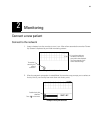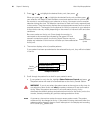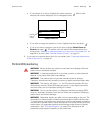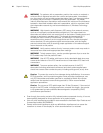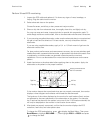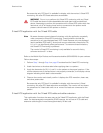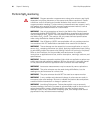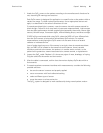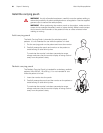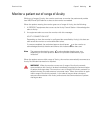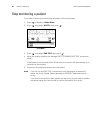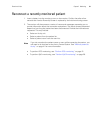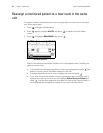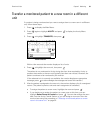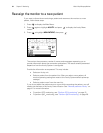Directions for Use Chapter 2 Monitoring 27
1. Attach the SpO
2
sensor to the patient according to the manufacturer’s directions for
use, observing all warnings and cautions.
Each SpO
2
sensor is designed for application to a specific site on the patient within a
certain size range. To obtain optimal performance, use an appropriate sensor and
apply it as described in the sensor’s directions for use.
If excessive ambient light is present, cover the sensor site with opaque material to
block the light. Failure to do so may result in inaccurate measurements. Light sources
that can affect performance include surgical lights (especially those with a xenon light
source), bilirubin lamps, fluorescent lights, infrared heating lamps, and direct sunlight.
If NIBP will be monitored while using SpO
2
, place the NIBP cuff on a different limb
than the SpO
2
sensor to help reduce unnecessary SpO
2
alarms. For optimal
measurements, avoid placing the SpO
2
sensor on the same limb as an arterial
catheter or intravascular line.
Loss of pulse signal can occur if the sensor is too tight, there is excessive ambient
light, an NIBP cuff is inflated on the same limb as the sensor, there is arterial
occlusion proximal to the sensor, the patient is in cardiac arrest or shock, or the
patient has hypotension, severe vasoconstriction, severe anemia, or hypothermia.
2. Inspect the SpO
2
cable. Replace it if it shows any signs of wear, breakage, or fraying.
Plug the cable into the sensor and the monitor.
3. After the cable is connected, confirm that the monitor displays SpO
2
data within a
few seconds.
4. If excessive patient movement interferes with measurements, consider the following
possible solutions:
• be sure the sensor is secure and properly applied
• use a new sensor with fresh adhesive backing
• select a different type of sensor
• move the sensor to a less active site
The SpO
2
system is designed to work satisfactorily during normal patient motion.



